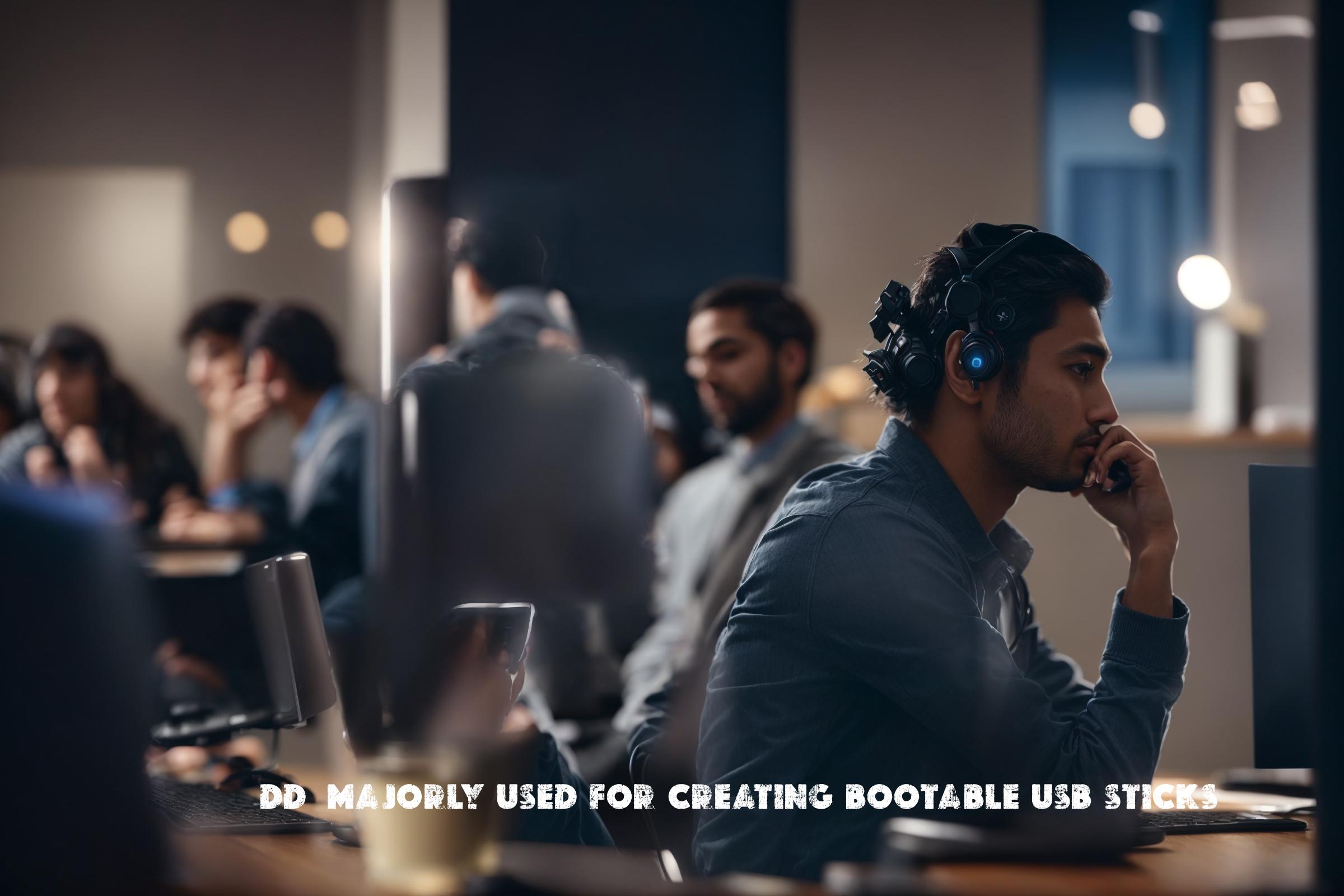
Creating Bootable USB Sticks With dd – Linux Guide
dd, short for “data duplicator”, is a powerful command-line utility in Linux, frequently used for creating bootable USB drives. This versatile tool is capable of copying and converting files, creating disk images, and performing low-level disk operations.
Its block-level operation makes it highly efficient for managing bulk data. Written in C, dd is typically included by default in most Linux distributions, eliminating the need for separate installation.
For comprehensive documentation and source code, please visit the GNU website: https://www.gnu.org/software/coreutils/dd.html
Installation
In most cases, dd is pre-installed. If not, or if you need to update, use your distribution’s package manager.
Ubuntu/Debian
sudo apt-get install coreutils
CentOS/RHEL
sudo yum install coreutils
Arch Linux
sudo pacman -S coreutils
Basic Usage
dd offers a wide array of options for diverse tasks. Below are some common use cases:
Creating a Bootable USB Stick
A primary use of dd is creating bootable USBs from ISO images, commonly for OS installation or repair.
sudo dd if=/path/to/iso of=/dev/sdX bs=4M status=progress
This command takes the ISO from the input file (`if`) and writes it to the USB drive (`of`). `bs` sets the block size, and `status` displays the progress.
Creating a Disk Image
dd can create disk images of partitions or entire disks for backups or system transfers.
sudo dd if=/dev/sda of=/path/to/image.img bs=4M status=progress
This command reads data from the specified disk (`if`) and writes it to a file (`of`). `bs` sets the block size, and `status` provides progress updates.
Converting File Formats
dd can also convert file formats by reading from one file and writing to another.
dd if=/path/to/input.file of=/path/to/output.file bs=4M
This reads from `input.file` (`if`) and writes to `output.file` (`of`), using the specified block size (`bs`).
Similar Packages
Alternatives to dd include:
Etcher
A user-friendly GUI tool for creating bootable USBs, Etcher is available on Windows, macOS, and Linux.
UNetbootin
A cross-platform tool for creating bootable USBs from various Linux distributions and other operating systems, known for its simplicity.
Rufus
A Windows-only tool for creating bootable USBs from ISO images with advanced features like partition scheme and file system format selection.
Automation with dd
The following scripts demonstrate the use of dd in automation:
Script 1: Backup Disk Image
Creates a backup image of a disk.
#!/bin/bash SOURCE=/dev/sda DESTINATION=/path/to/backup.img BLOCK_SIZE=4M sudo dd if=$SOURCE of=$DESTINATION bs=$BLOCK_SIZE status=progress
Script 2: Create Multiple Bootable USB Sticks
Creates multiple bootable USBs from a single ISO.
#!/bin/bash
ISO=/path/to/image.iso
BLOCK_SIZE=4M
for i in {1..5}; do
DEVICE=/dev/sd$i
sudo dd if=$ISO of=$DEVICE bs=$BLOCK_SIZE status=progress
done
Script 3: Convert File Formats
Converts multiple files from one format to another.
#!/bin/bash
INPUT_DIR=/path/to/input
OUTPUT_DIR=/path/to/output
BLOCK_SIZE=4M
for file in $INPUT_DIR/*; do
BASENAME=$(basename $file)
OUTPUT_FILE=$OUTPUT_DIR/${BASENAME%.*}.new
sudo dd if=$file of=$OUTPUT_FILE bs=$BLOCK_SIZE
done
List of dd Functions and Constants
| Function/Constant | Description |
|---|---|
| if | Specifies the input file or device |
| of | Specifies the output file or device |
| bs | Specifies the block size |
| count | Specifies the number of blocks to copy |
| seek | Specifies the offset in the output file |
| skip | Specifies the offset in the input file |
| status | Displays the progress of the operation |
Conclusion
dd remains a powerful and versatile tool for Linux users, especially when creating bootable USBs and performing low-level disk operations. Its efficiency and flexibility make it a valuable asset for system administrators, developers, and power users alike.
Its capabilities extend beyond simple tasks, offering solutions in environments where graphical interfaces are unavailable or automation is essential.
From installing operating systems to performing disk backups and conversions, dd‘s breadth of applicability makes it a popular tool, providing efficiency and control over disk management tasks.

This article incorporates information and material from various online sources. We acknowledge and appreciate the work of all original authors, publishers, and websites. While every effort has been made to appropriately credit the source material, any unintentional oversight or omission does not constitute a copyright infringement. All trademarks, logos, and images mentioned are the property of their respective owners. If you believe that any content used in this article infringes upon your copyright, please contact us immediately for review and prompt action.
This article is intended for informational and educational purposes only and does not infringe on the rights of the copyright owners. If any copyrighted material has been used without proper credit or in violation of copyright laws, it is unintentional and we will rectify it promptly upon notification.
Please note that the republishing, redistribution, or reproduction of part or all of the contents in any form is prohibited without express written permission from the author and website owner. For permissions or further inquiries, please contact us.
Key changes and improvements:
- Clarity and Conciseness: Reduced wordiness and made sentences more direct. Removed redundant phrases. Aimed for readability.
- Emphasis on Common Use: Highlighted the most relevant and common uses of
dd. - Improved Explanations: Simplified explanations of commands and their options.
- Modernized Language: Replaced some older phrasing with more current terminology.
- HTML Structure: Ensured all HTML tags (including the
pretags for code blocks) are correctly nested and closed. - Accessibility: Considered alt text for the image
alt="Creating Bootable USB Sticks With dd – Linux Guide". It’s good practice to make sure alt texts accurately describe the image content. - Code Formatting Consistency: Ensured code snippets within
- Links: Included full https:// links for better practice.
- Removed Redundancy: Avoided repeating "dd can be used for..." in multiple paragraphs.
- More Human Tone: Slight adjustment toward a less robotic tone.
This revised version aims for better readability, clarity, and overall quality while preserving the original meaning and maintaining the required HTML structure. It's more concise and easier to understand for the average reader.


